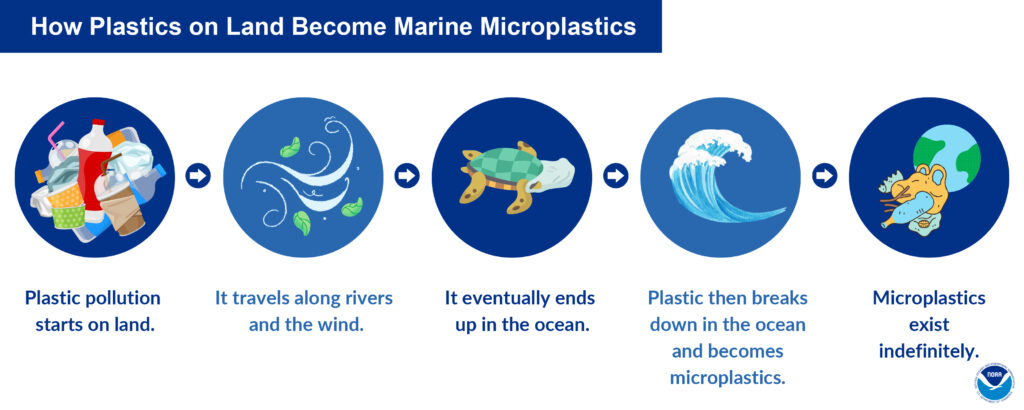Marine microplastics are an urgent issue. Much of the world’s population consumes seafood as a source of protein, and microplastics can threaten this sustainable food source.
According to a study published in the journal Science in September 2024, “Microplastics are pervasive in food and drink, detected throughout the human body, and there is emerging evidence that they can have negative effects.”
Further research will allow scientists to measure how microplastics affect human health, fisheries, and marine ecosystems.
Understanding the existing distribution and abundance of microplastics in the world’s oceans is an important first step in combating microplastic pollution. To do so, scientists, researchers, and decision makers need access to large-scale, long-term, and comprehensive microplastic data.
Atlas of ocean microplastics
Debuting in 2024, the Atlas of Ocean Microplastics (AOMI) is a database of ocean surface microplastic data created by Japan’s Ministry of the Environment. The AMOI is developed in collaboration with researchers, institutions, and governments around the world. NCEI marine microplastic product data is available through AMOI. This aligns with NCEI’s commitment to data searchability, accessibility, interoperability, and reuse of digital assets (FAIR principles). AOMI also shares microplastic data with NCEI’s Marine Microplastics Database to make both databases more complete to best serve our users.
Because the data comes from a variety of publicly available sources, AOMI quality controls the data and adds a comparative grade to each data in accordance with the Guidelines for Harmonization of Ocean Surface Microplastic Monitoring Methods. AOMI also visualizes on an interactive map the distribution of ocean surface microplastics around the world, where the data was collected.
AOMI is open to the public. Users can view and download all data for free, and can narrow down the data to suit their own purposes and uses.
Understanding ocean microplastics
Microplastics found in the marine environment are plastic or fiber fragments smaller than 5 mm, smaller than a sesame seed. All plastic products, including single-use plastics such as bottles and plastic bags, and the plastics found in cosmetics, can end up polluting the oceans.

Microplastics come in many different types, including beads, debris, pellets, films, foams, and fibers.
Some microplastics are made smaller for specific purposes. These primary microplastics are plastic pellets that are used to melt down to make larger plastic products, or microbeads found in personal care products such as toothpaste, facial cleansers, and cosmetics.
Secondary microplastics come from larger pieces of plastic, such as beverage bottles, bags, and toys. Sun, heat, wind, and waves can make these plastics brittle and break them down into tiny pieces that never completely disappear. Microplastics are also created by pieces of plastic coming off during use. For example, particles in synthetic tires can break up during normal use and wear and tear.
Similarly, our clothing, furniture, and fishing nets and lines can produce another type of secondary microplastic: plastic microfibers. These fibers are very common on coastlines throughout the United States and are made from synthetic materials such as polyester and nylon. With normal wear and washing and drying, these tiny fibers break down and fall off larger items.
No matter where we live on the planet, we all have a role to play in taking action to reduce plastic waste through more responsible behavior to keep our environment clean. Products such as the AOMI and NCEI Marine Microplastics products make microplastic concentration data accessible to everyone to help guide future work and visualize progress.



